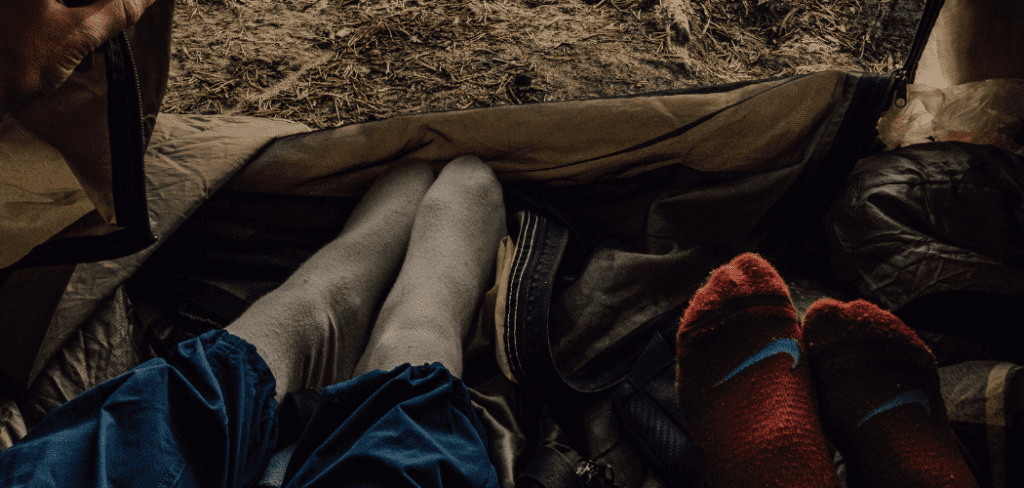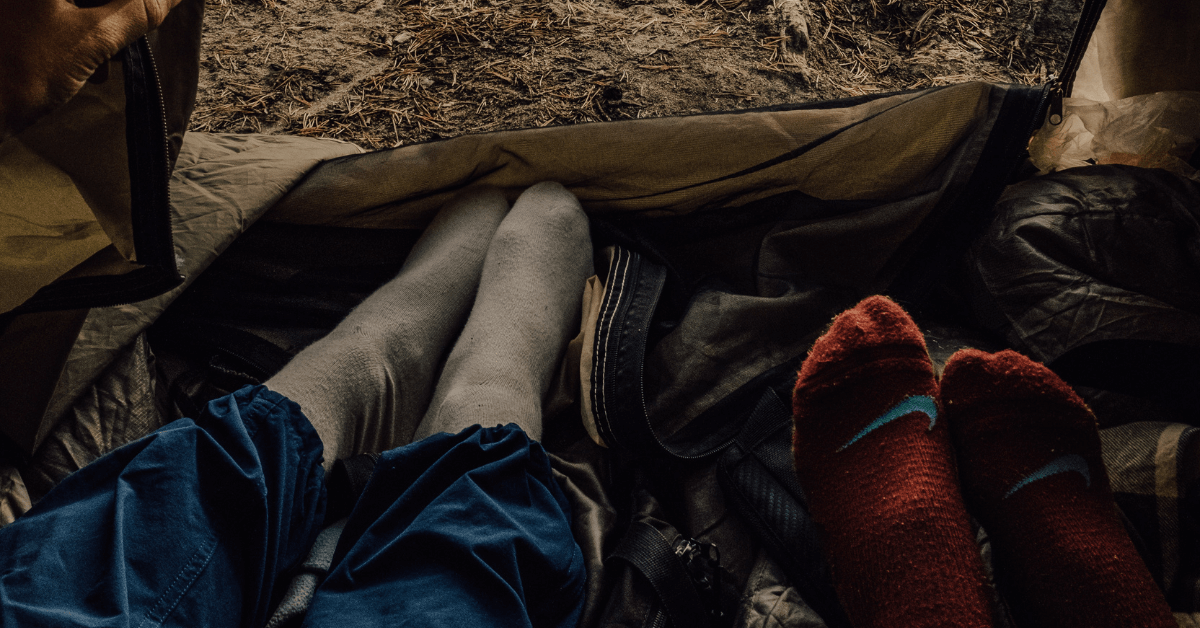As an outdoor enthusiast, you’re no stranger to making decisions that affect the comfort and success of your camping trip. One of those decisions is whether or not to use a ground cloth under your tent. And if you’re like many campers, you might be wondering, “Do I really need one?”
The use of ground cloths is a common question among outdoor enthusiasts. It’s a question that has plagued campers for generations, right up there with “Which way to the nearest Starbucks?” (Just kidding, stay focused on the great outdoors!)
But in all seriousness, the purpose of this blog post is to help answer that question and provide you with the information you need to make an informed decision.
Let’s start from the top.
What is a Ground Cloth?
A ground cloth is a piece of material that you place between your tent and the ground to protect the bottom of your tent from wear, tear, and moisture. It’s like a superhero shield for your tent, keeping it safe from the rough and rugged terrain below.
Ground cloths can be made from a variety of materials, including canvas, polyethylene, and Tyvek. It’s important to choose a material that is durable and lightweight, so it won’t add too much extra weight to your camping gear.
When it comes to size and shape, ground cloths come in all shapes and sizes, from a simple rectangle to a custom-fit footprint specifically designed for your tent. It’s important to choose a ground cloth that is the right size and shape for your tent, as a poorly fitting ground cloth can be more of a hindrance than a help.
So, Do I Need A Ground Cloth Under My Tent?
Whether you’re a seasoned camper or just starting out, a ground cloth can be a valuable addition to your camping gear. While not required, using a ground cloth can protect your tent from rough terrain, keep it dry in wet conditions, add extra comfort, and prolong the life of your gear.
So, while it’s not a must-have item, it can definitely enhance your outdoor adventures.
4 Benefits of Using a Ground Cloth Under Your Tent
Using a ground cloth under your tent can provide a multitude of benefits, from protecting your tent to enhancing your camping comfort. Here is a rundown of some of the most obvious.
1. Protects Your Tent
The primary benefit of using a ground cloth is that it protects the bottom of your tent from wear, tear, and moisture. This means that your tent will last longer and look better, even after multiple camping trips. And who doesn’t want to make their gear last as long as possible?
2. Enhances Comfort
A ground cloth can also enhance your camping comfort by providing a barrier between you and the cold, damp ground. This can be especially important on chilly nights when you don’t want to be shivering and shimmying on top of a cold, damp ground cloth.
3. Keeps You Dry
If you’re camping in an area with damp or wet ground, a ground cloth can help keep you and your gear dry. This is especially important if you’re camping in an area with heavy dew or rain, as the damp ground can quickly seep into your tent and make for a less-than-comfortable sleeping experience.
4. Easy to Clean
Ground cloths are usually easy to clean and maintain, making them a great choice for campers who like to keep their gear in tip-top shape. Simply shake off any dirt or debris and you’re good to go.
When Should You Use a Ground Cloth Under Your Tent?

Knowing when to use a ground cloth is just as important as knowing what it is. In this section of the blog post, we’ll go over some of the key scenarios where a ground cloth could come in handy.
1. Wet or Moist Conditions
If you’re camping in an area that’s prone to wet or moist conditions, a ground cloth is a must-have. It will help keep the bottom of your tent dry and free from dampness, so you can stay comfortable and cozy throughout the night.
2. Rough Terrain
Camping in rough terrain can be tough on your tent, and a ground cloth can help protect the bottom from getting scratched or punctured. Consider using a ground cloth if you’ll be camping on rocky, stony, or otherwise uneven ground.
3. Long-Term Camping
If you’re camping for an extended period of time, a ground cloth is a wise investment. It will help keep the bottom of your tent in good condition, even after multiple uses, so you can continue to enjoy comfortable camping trips for years to come.
4. Comfort
Finally, some people simply prefer the added comfort of a ground cloth under their tent. It can provide a cushion between the ground and your sleeping bag, making it more comfortable to sleep on.
How to Choose the Right Ground Cloth to Put Under Your Tent
Choosing the right ground cloth for your camping setup is crucial to ensuring a comfortable, safe, and dry camping experience. With so many options available, it can be difficult to know where to start.
Below, we’ll go over some important factors to consider when choosing the right ground cloth for your needs.
1. Size
Make sure to choose a ground cloth that is the right size for your tent. A ground cloth that is too small won’t provide adequate protection, while a ground cloth that is too large may be difficult to manage and could even cause tripping hazards.
2. Material
Ground cloths can be made from a variety of materials, including polyethylene, nylon, and canvas. Consider the environment you’ll be camping in, as well as the durability and weight of each material, to determine the best option for you.
3. Waterproofing
If you’re camping in an area with damp or wet ground, it’s important to choose a ground cloth with good waterproofing properties. Look for a ground cloth made from a waterproof material or with a waterproof coating to ensure you stay dry throughout the night.
4. Durability
Consider the durability of the ground cloth you’re choosing, especially if you plan on using it in rough or rocky terrain. Look for ground cloths made from tough, rip-resistant materials to ensure your ground cloth lasts for many camping trips to come.
Related: Where Do You Put Your Shoes When Camping In A Tent?
4 Alternatives to Ground Cloths
Of course, not everyone is a fan of using ground cloths under their tents, and that’s okay! There are plenty of alternatives that can provide similar benefits, without the added hassle. Below, we’ll go over some of the most popular alternatives to ground cloths.
1. Tent Footprints
Tent footprints are specifically designed to protect the bottom of your tent, and they often come in the same shape and size as your tent. They’re typically made from a durable, waterproof material that can withstand rough terrain and damp ground.
2. Tyvek Ground Sheets
Tyvek ground sheets are an excellent alternative to traditional ground cloths. They’re lightweight, waterproof, and durable, making them perfect for use under your tent. Plus, they’re often less expensive than traditional ground cloths, making them a great budget-friendly option.
3. Tarpaulins
Tarpaulins are an excellent option for outdoor enthusiasts who don’t want to be weighed down by heavy gear. They’re lightweight and versatile and can be used as a ground cloth, a rain cover, or even a makeshift shelter. Just make sure to choose a tarpaulin that’s the right size for your tent and the environment you’ll be camping in.
4. Campsite Design
Finally, consider the design of your campsite. If you’re camping in an area with rough or rocky terrain, try to find a flat, clear spot to set up your tent. This will help protect the bottom of your tent, without the need for a ground cloth.
Conclusion – Do I Need A Ground Cloth Under My Tent?
While not strictly necessary, a ground cloth can provide several benefits when camping such as protecting your tent from rough terrain, keeping it dry in wet conditions, adding extra comfort, and extending the life of your gear.
And there you have it, a complete guide to ground clothes for outdoor enthusiasts. Whether you’re an experienced camper or just starting out, this article should have given you a good understanding of what a ground cloth is, why you might need one, and how to choose the right one for you.
So, if you’re in the market for a new camping accessory, consider a ground cloth. It might just be the missing piece of your outdoor puzzle. And, who knows, you might even find yourself having more fun and better nights of sleep because of it.
